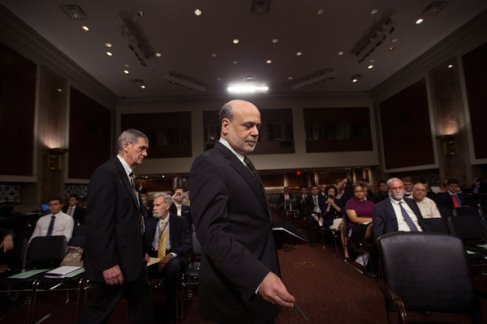The article with the above title published by Nelson D. Schwartz in the New York Times on May 22, 2013 reports that even though there has been signs of improvement in the job market, Ben S. Bernanke, the chairman of the Federal Reserve, still reports a need to be cautious in easing back from efforts to stimulate the economy.
Bernanke argues that ending the bond-buying effort could do more harm than good and it is necessary to witness continued evidence of stability in the job market and a steady decline in unemployment. Prematurely decreasing stimulus could lead to a temporary rise in interest rates and could carry a risk of slowing or harming the recently experienced economic recovery.
However, the sentiment is not shared by some members of the Fed’s Open Market committee. Some Fed policy makers suggest a reduction in the purchasing of government bonds as early as June: the meeting minutes display a clear challenge to forge consensus even though Bernanke still evidently enjoys support of a majority. There was confusion on Wall Street after the disclosure of the meeting minutes as major indicators were up in the morning following Mr. Bernanke’s statement to a Congressional committee, but proceeded to fall sharply as the minutes were released. When questioned by a lawmaker, Bernanke suggested a cut on bond purchases some time in “the next few meetings”, a statement which took on even greater significance on Wall Street with prospects of cuts being as early as June.
It is important to note, however, that although cuts are imminent, many analysts agree that there is little chance committee members will “take their foot off the gas” in June. On the same hand, even if cuts do occur, as Texan Representative Kevin Brady states, it would not be “an automatic, mechanistic program. Changes would depend on incoming data”.
It is interesting to see how decision making in a macro level affects micro level economic activity directly. The government’s decision to purchase or not bonds, and even speculation around it, causes great changes in decision making for stock market investors. With the uncertainty around the Fed’s stimulus S&P 500, Dow Jones and Nasdaq all finished the day having sunk. The existence of stimulus has a direct effect on the market’s liquidity, raising stock prices, as well as on bond yields — speculation forces stock market investors to adjust their positions.
On the other hand, what is also insightful about this article is the caution with which the Federal Reserve must proceed in deciding whether or not to cut down, maintain or increase stimulus. If the Fed decides to tighten monetary policy it risks slowing down or ending recovery, however, if they decide to increase or keep the stimulus for too long, they risk creating a bubble. The stimulus indirectly increases stock prices as it increases the market’s liquidity– S&P 500 has increased 16% since the beginning of the year. However, if the companies are not doing as well as portrayed by the price of its stock, performance which can be measured by price-to earnings multiples, then the bubble can explode and lead yet to another recession.
Tatiana Gaspar de Souza
Brown University
Link to article: http://www.nytimes.com/2013/05/23/business/economy/bernanke-fed-stimulus-still-needed-to-help-recovery.html?_r=1&
